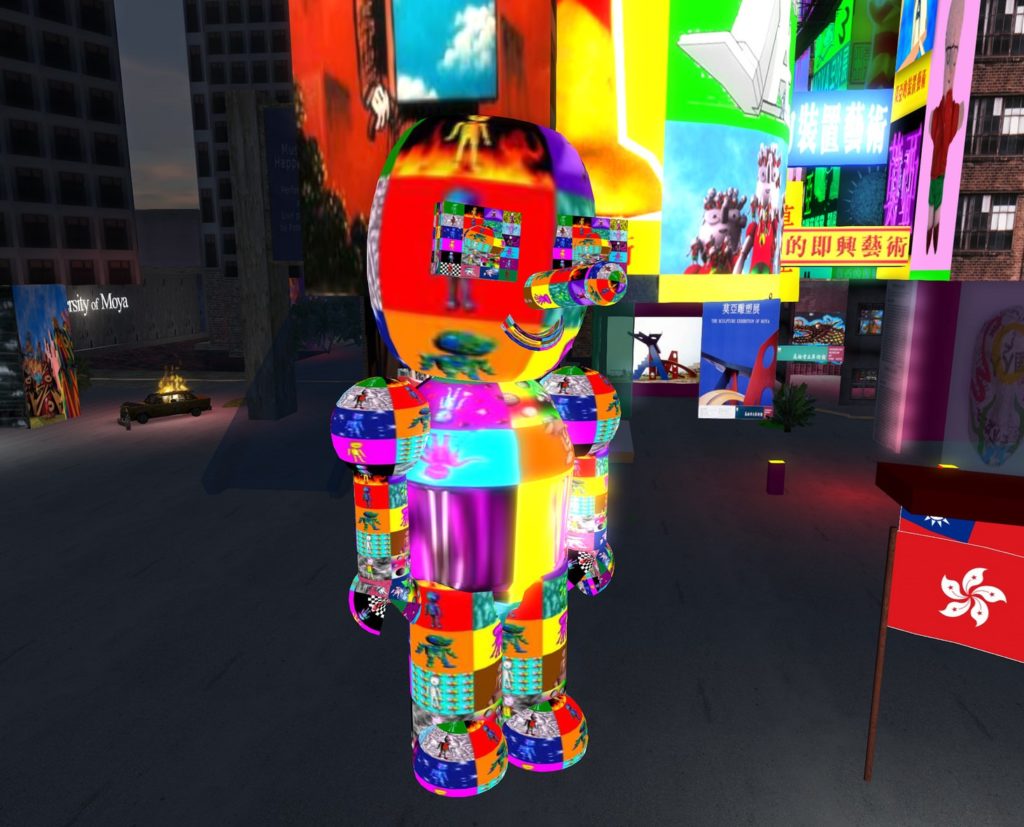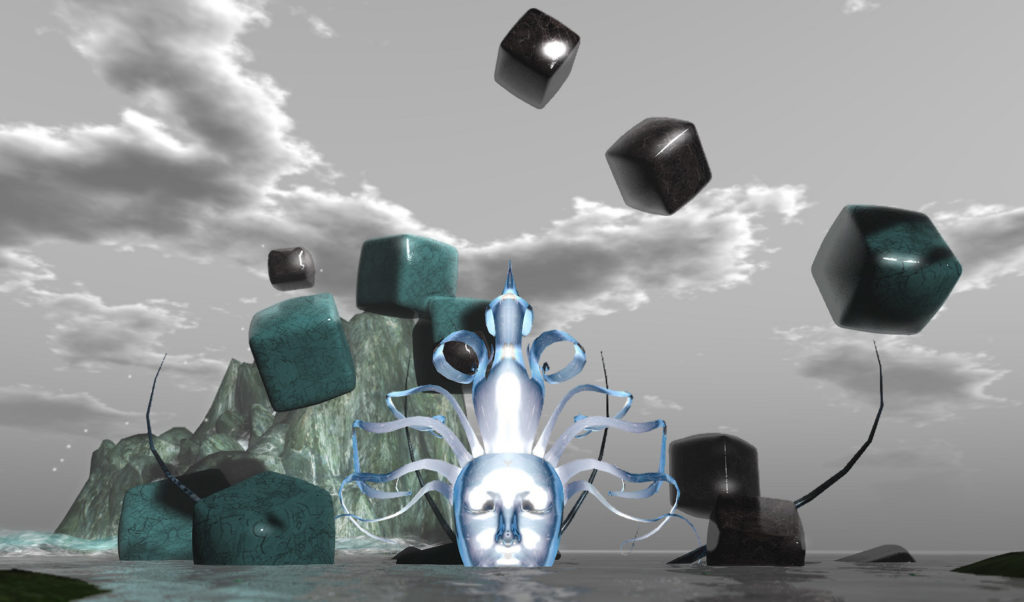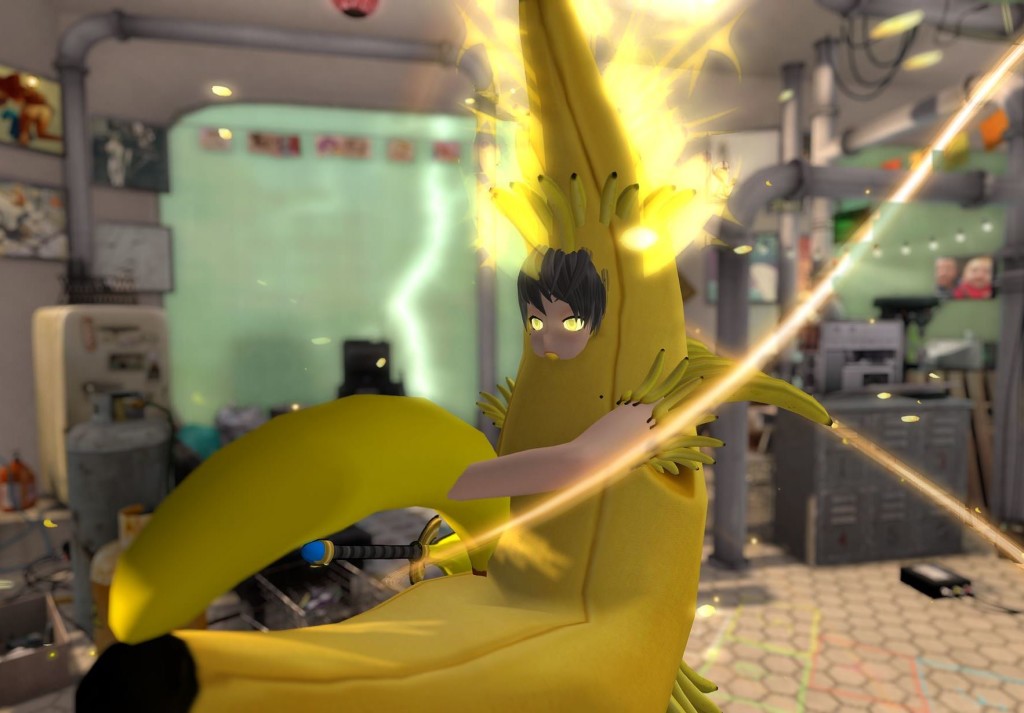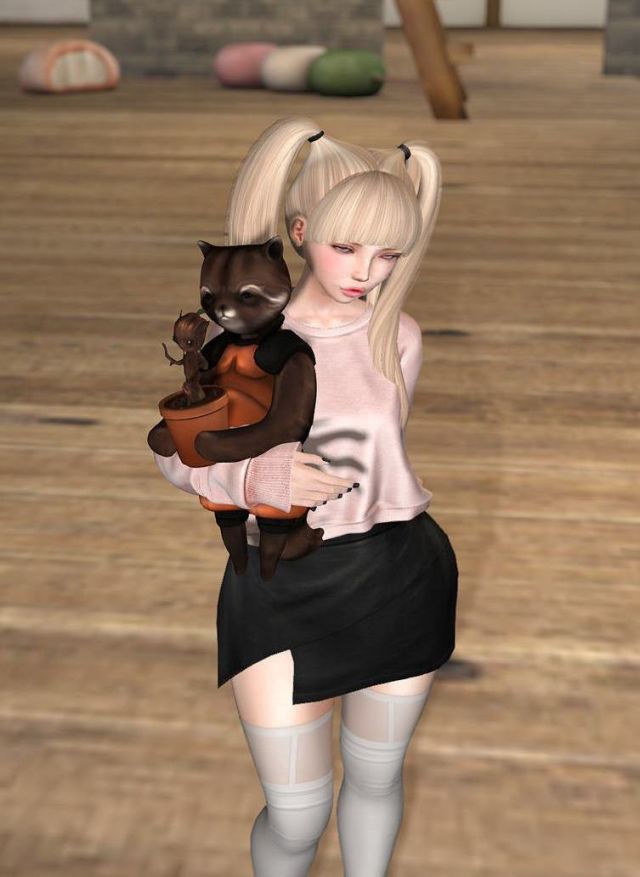The following post was contributed by John Ohno. You may know know him as @enkiv2 from the Cyberpunk Futurism chat group or the #botALLY chat group. This dispatch serves as somewhat of a correction to my previous mentions of Second Life — here and here — for which I am grateful.
John provides more hands-on details about the logistics of virtual self-representation. He did want to add this caveat: “I haven’t even been on Second Life since, like, 2012 or 2013, so maybe things have changed. I haven’t been keeping up.” Regardless, his recollection of the process is interesting…
While it’s possible to get non-human avatars in Second Life, doing so is more technically difficult than getting human-shaped ones. Second Life ships with the ability to customize within the range of pretty human-shaped avatars, but all non-human ones are third-party extensions that frequently break when Linden Labs makes upgrades. Ultimately those extensions are fairly expensive and not very customizable, because of the cost to upload meshes.
At normal exchange rates, it costs about a dollar to upload a texture and a dollar to upload a mesh. An interesting avatar might require three or four new textures and a couple of meshes. Most people are unwilling to pay that and equally unwilling make the 3D-modeling effort in the first place. If somebody else does it for you then you end up with a mass-produced avatar that can’t be customized.
You see a similar pattern on the open grid, where there aren’t any actual monetary costs for uploads, so I think the barrier is just effort and lack of customization.

Image via ▓▒░ TORLEY ░▒▓.
Linden Labs’ business model is designed around exchange with the in-game economy, and the primary method they have for forcing people to participate economically is to charge for uploads of certain types of content. There are a lot of things that you can do in-game without any money. But there are different domains.
Built-in avatar customizations are within the same domain that you’d get in The Sims. You can change your height, breast size, eye size, hair style, nose length, and stuff like that. You can make yourself muscular or skinny. You can change your skin color to any color in the palette. You can wear any built-in or free clothing, or compose your own out of built-in or free textures, of which there are plenty. I used to play as an eight-foot-tall muscular green-skinned guy with red eyes in a leather trench coat, none of which cost me anything.
However, if you want to diverge from the humanoid form, you’re replacing your avatar with an object that isn’t treated as an avatar. Objects can be created in-game for free, but there are resource limits based on the number of “prims” — primitive shapes. When you’re building with prims, you’re stuck with things like spheres and cubes and toruses and pyramids. You can theoretically make anything out of them, but it’s time-consuming and most “sims” (sixty-five square kilometers of land) have an upper limit of a couple hundred prims at a time. If you go over that, prims will disappear or be rejected. So you can’t build something really complex out of prims and wear it unless you expect to be literally the only person or object within sixty-five kilometers.
About ten years after Second Life launched, Linden Labs added a couple mechanisms for getting around prim limits. Both of them involve doing your 3D modeling in some outside program and uploading a file. One is “sculpties”, where you turn a height map into a texture and use it to warp a sphere. The other is “meshes”, where you export a 3D model and import it as a single object, counted separately from prims for resource-usage reasons.
Super-custom avatars are typically made by shrinking or vanishing your human avatar, and then wearing one or more meshes. I’ve seen some cool ones, like Futurama-style heads in jars that float. The head-in-a-jar thing can theoretically be a single mesh and doesn’t require special animations, so that’s fairly cheap — but you need to model somebody’s head. On the other hand, if you want to have a kitten avatar, you’re going to need separate meshes for the legs and tail and upload animations for the walk cycle if you want it to do anything other than glide.
Thank you, John! The takeaway is that supply chains still matter in the virtual world. You can’t design an MMORPG without constraints, and I have to wonder if we’d even enjoy exploring the resultant world if that weren’t true…




